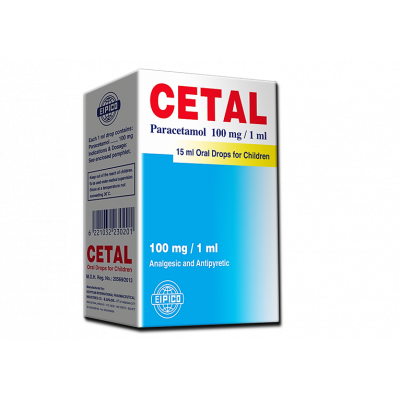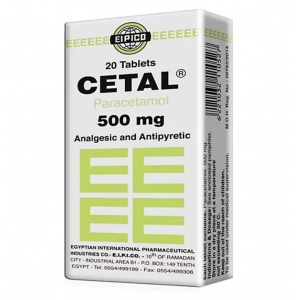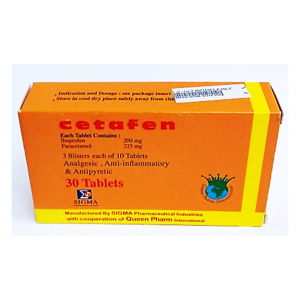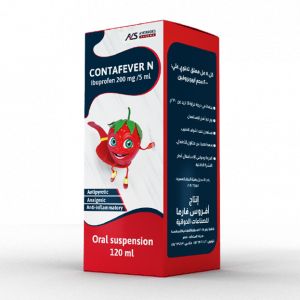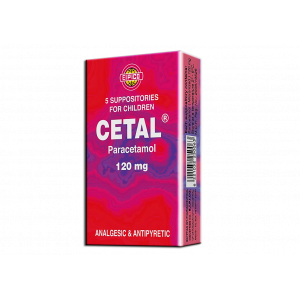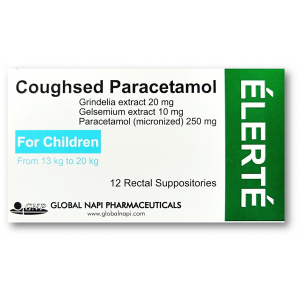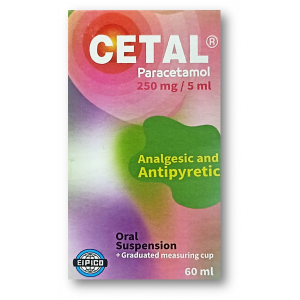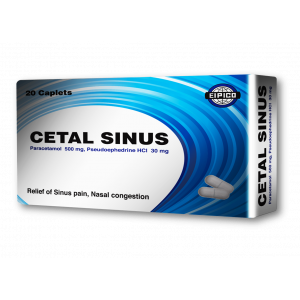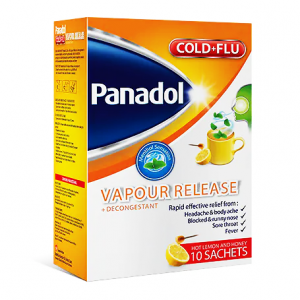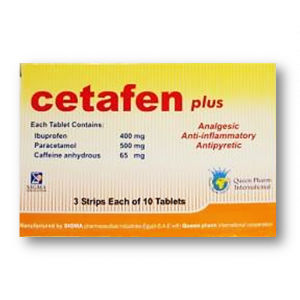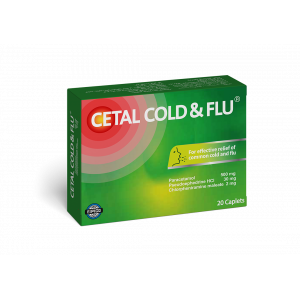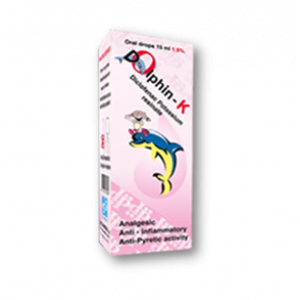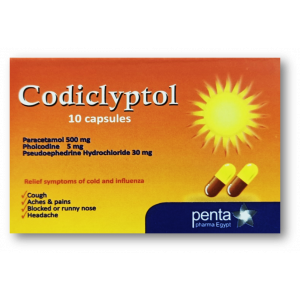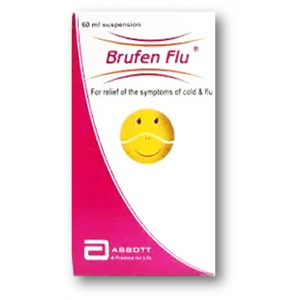- Anti-hestaminic & Respiratory Drugs (21)
- Anti-inflammatory Drugs (182) +-
- Baby & Mom (1314) +-
- Baby & Mom > Bath, skin & Hair > Skin Care > wibes (53)
- Beauty (2721) +-
- Beauty > Skin Care > whitening (273)
- Chemotherapy & Immune Response (670) +-
- Chemotherapy & Immune Response > ANTI-FUNGAL (7)
- Chemotherapy & Immune Response > Chemotherapeutic Agents > Hormone Antagonists >Enzyme Inhibitors (236)
- CIRCULATORY DISTURBANCE AGENTS (23)
- Diet & Fitness Products (248) +-
- DRUG AFFECTING CENTRAL NERVOUS SYSTEM (183)
- Drugs affecting CNS >Anti- epileptic (78)
- HEMATOLOGY (12)
-
Medical Supplies (468)
+-
- Chemicals & Disinfectants (19)
- Dental Supplies (27)
- Devices & Instruments (8)
- Diabetic Supplies (107)
- General Medical Supplies (21)
- I.V & Medical Solution (0)
- Intensive Care Unit & Anesthesia Supplies (0)
- Kindney Unit Supplies (12)
- Lab Supplies (1)
- Miscellaneous (21)
- Neonatal Unit Supplies (0)
- Operation Room Supplies (2)
- Sanitary (5)
- Sterilization Supplies (0)
- Surgical Sutures (4)
- Syringes (3)
-
Medicines & Health (2535)
+-
- Allergy & Sinus (93)
- Children's Health Care (52)
- Cough, Cold & Flu (297)
- Digestive Health & Nausea (218)
- Ear, Nose & Throat Care (174)
- Eye Care (117)
- Feminine Care (315)
- Foot Care (4)
- Orthopaedic Appliances (0)
- Pain Relief & Management (227)
- Pill Organizer (2)
- Skin Treatments (734)
- Sleep & Snoring Aids (0)
- Support & Braces (6)
- Medicines & health > Gout releif (42)
- Natural & Organic Products (82) +-
- OTC > Analgesics > Anti-inflammatory Drugs (43)
-
Personal Care (3043)
+-
- Bath & Body (256)
- Deodorant & Anti-perspirants (179)
- Ear, Nose & Throat Care (169)
- Eye Care (123)
- Feminine Care (362)
- Foot Care (12)
- Hair Care (388)
- Home Tests & Monitorings (14)
- Incontinence (7)
- Lip Care (20)
- Massage & Relaxation (18)
- Natural & Organic Personal Care (7)
- Oral Care (81)
- Pregnancy & Fertility (60)
- Shaving & Grooming (67)
- Sun Care (67)
- Prescribtion drugs > cardiovascular system > Hypertention drugs (334) +-
-
Prescription Drugs (2990)
+-
- Analgesics (180)
- Cardiovascular System (347)
- Drugs Affecting Musculoskeletal System (62)
- Drugs Used In Infections (53)
- Ear & Nose Drugs (2)
- Endocrine System (157)
- Gastrointestinal Tract (233)
- Gastrointestinal Tract (215)
- GYNECOLOGY (2)
- Miscellaneous (6)
- NEPHROLOGY > URINARY SYSTEM > RENAL DISORDERS > URINARY TRACT DISORDERS (24)
- NEUROLOGY (210)
- Nutrients & Blood Electrolytes (2)
- prescription drugs > cardiovascular system >Anti-hypertensive drugs (78)
- Prescription Drugs > Gastrointestinal Tract > Hepatology > Liver treatment (57)
- Respiratory System (137)
- SKIN > NAILS > HAIR > TOPICAL PREPARATIONS (42)
- Vaccines (1)
- Sexual Wellness (258) +-
- strong anti-emetic & adjuvent used with anti-neoplastic (0)
- Vitamins & Minerals Supplements (1135) +-
Ex Tax: 15EGP
Example
You can return the product within 14 days of purchase.
ReturnsYou can return the product within 14 days of purchase.

CETAL 100 MG / ML ORAL DROPS ( PARACETAMOL ) 15 ML
Composition
Each dosage unit contains
Tablets 500 mg
1 ml Drop 100 mg
5 ml Suspension 250 mg
Suppositories for Children 120 mg
Inactive ingredients:
CETAL Tablets: Microcrystalline cellulose PH 101, colloidal silicon dioxide, starch 1500, magnesium stearate, sodium starch glycolate.
CETAL Drops: Propylene glycol, glycerin, sorbitol 70%, polyethylene glycol, ethanol 96 %, citric acid anhydrous, saccharin sodium, sodium benzoate, FD& C yellow No.6, Orange oil, purified water.
CETAL Suspension: Carboxy methyl cellulose sodium, sorbitol 70%, glycerol, methyl p-hydroxy benzoate sodium, propyl p-hydroxy benzoate sodium, saccharin sodium, Hydroxypropyl methyl cellulose E4, sucrose, colloidal silicon dioxide, Polysorbate 80, sodium benzoate, citric acid anhydrous, dimethicon antifoam, tutti frutti flavour oil, FD&C yeIJow, purified water.
CETAL Suppositories for Children: Propylene glycol monostearate, cremphor EL, hard fat.
Therapeutic Indications
For the treatment of mild to moderate pain, including headache, migraine, neuralgia, toothache, sore throat, period pains, aches and pains.
Symptomatic relief of rheumatic aches and pains.
Symptomatic relief of influenza, feverishness, feverish colds.
Cetal Suppositories for Children may be particularly useful in patients unable to take oral forms of Paracetamol e.g. postoperatively or with nausea and vomiting.
acid anhydrous, dimethicon antifoam, tutti frutti flavour oil, FD&C yeIJow, purified water.
Dosage and Administration
Dosage:
Adults, Elderly and Children 16 years or Older: 500 mg-1 g (1 – 2 tablets) (10 ml-20 ml) every 3 hours when necessary to a maximum of 8 doses in 24 hours.
Children:
6-8 years: 250 mg (½ tablet) (5 ml) every 4-6 hours when necessary to a maximum of 4 doses in 24 hours.
8-10 years: 250 mg (½ tablet) (5 ml) every 4-6 hours when necessary to a maximum of 4 doses in 24 hours.
10-12 years: 500 mg (1 tablet) (10 ml) every 4-6 hours when necessary to a maximum of 4 doses in 24 hours.
12-15 years: 500 mg – 750 mg (1 tablet-1½ tablet) (10 ml-15 ml) every 4-6 hours when necessary to a maximum of 4 doses in 24 hours.
Suppositories:
Children:
1-5 years (10-18 kg): 1 – 2 suppositories; maximum of 1 g in 24 hours. Dose may be repeated every 4–6 hours with a maximum of 4 doses in 24 hours. The dose should be based on age and weight i.e.:
1 year (10 kg): (120 mg) 1 suppository.
5 years (18 kg): (240 mg) 2 suppositories.
Children 1-6 years: 125 mg (2.5 ml) to 250 mg (5 ml) every 4-6 hours as necessary, to a maximum of 4 doses daily.
Children 3-12 months: 60-120 mg every 4-6 hours as necessary, to a maximum of 4 doses daily.
Dosage Instruction:
Take every 4 to 6 hours, as required. Do not take more frequently than every 4 hours. Not more than 4 doses should be administered in any 24 hour period.
Do not give this medicine to your child for more than 3 days without speaking to your doctor or pharmacist.
CETAL Suspension: It is important to shake the bottle for at least 10 seconds before use.
Contraindications
Hypersensitivity to paracetamol or any other ingredients.
If you are taking any other medicines that contain paracetamol.
Patients with severe hepatic dysfunction.
Warnings and Precautions
Do not exceed the stated dose.
Patients should be advised to consult their doctor if their headaches become persistent.
Consult a doctor if symptoms persist or worsen. Do not continue to use for longer than 3 days except on the advice of a doctor.
Ask the doctor or pharmacist about taking the tablets if pregnant or already on a course of medication.
This product contains paracetamol. Patients should be advised not to take other paracetamol-containing products concurrently.
Patients should be advised to consult a doctor if they suffer from non-serious arthritis and need to take painkillers every day.
Talk to a doctor at once if you take too much of this medicine even if you feel well. This is because too much paracetamol can cause delayed, serious liver damage.
Do not take more medicine than the doctor tells you to. If you do not get better, talk to your doctor.
Care is advised in the administration of paracetamol to patients with severe renal or severe hepatic impairment. The hazards of overdose are greater in those with non-cirrhotic alcoholic liver disease.
Keep out of the sight and reach of children.
As with all medicines, if you or your child is currently taking any medicine consult your doctor or pharmacist before taking this product.
Cetal Drops and Suspension contain sorbitol which may cause softening of stool.
Cetal Drops and Suspension contain saccharin, so it should not be used in patients with hepatic disorder as it may cause elevation of liver enzymes.
Drug Interactions
Alcohol reduces liver capacity to deal with paracetamol.
Chronic use of paracetamol enhances effect of warfarin and other coumarins with increased risk of bleeding; occasional doses have no significant effect.
Colestyramine reduces absorption of paracetamol. Therefore, the colestyramine should not be taken within one hour if maximal analgesia is required.
Metoclopramide and domperidone accelerate absorption of paracetamol. However concurrent use need not be avoided.
May interact with chloramphenicol causing increased plasma levels of chloramphenicol.
The hepatotoxicity of paracetamol, particularly after overdosage, may be increased by drugs which induce liver microsomal enzymes such as barbiturates, tricyclic antidepressants and alcohol.
Chronic alcohol intake can increase the hepatotoxicity of paracetamol overdose and may have contributed to the acute pancreatitis reported in one patient who had taken an overdose of paracetamol. Acute alcohol intake may diminish an individual's ability to metabolise large doses of paracetamol, the plasma half-life of which can be prolonged.
Antivirals: Regular use of paracetamol possibly reduces metabolism of zidovudine (increased risk of neutropenia).
The use of drugs that induce hepatic microsomal enzymes such as anticonvulsants and oral contraceptives may increase the extent of metabolism of paracetamol resulting in reduced plasma concentrations of the drug and a faster elimination rate.
Pregnancy and Lactation
Epidemiological studies in human pregnancy have shown no ill effects due to paracetamol being used in the recommended dosage, but patients should follow the advice of their doctor regarding its use.
Paracetamol is excreted in breast milk but not in clinically significant quantities. Available published data do not contraindicate breastfeeding.
Effects on ability to drive and use machines
None known.
Undesirable Effects
Adverse events of paracetamol from historical clinical trial data are both infrequent and from small patient exposure.
Accordingly, events reported from extensive postmarketing experience at therapeutic/labelled dose and considered attributable are tabulated below by system class.
Due to limited clinical trial data, the frequency of these adverse events is not known (cannot be estimated from available data), but postmarketing experience indicates that adverse reactions to paracetamol are rare and serious reactions are very rare.
Immune system disorders:
Hypersensitivity including skin rash may occur.
Blood and Lymphatic system disorders:
Not known: blood dyscrasias including thrombocytopenia and agranulocytosis.
Respiratory, Thoracic and Mediastinal disorders:
Bronchospasm*.
Hepatobiliary disorders:
Hepatic dysfunction.
Chronic hepatic necrosis has been reported in a patient who took daily therapeutic doses of paracetamol for about a year and liver damage has been reported after daily ingestion of excessive amounts for shorter periods. A review of a group of patients with chronic active hepatitis failed to reveal differences in the abnormalities of liver function in those who were long-term users of paracetamol nor was the control of the disease improved after paracetamol withdrawal.
Low level transaminase elevations may occur in some patients taking therapeutic doses of paracetamol; these are not accompanied with liver failure and usually resolve with continued therapy or discontinuation of paracetamol.
Nephrotoxic effects are uncommon and have not been reported in association with therapeutic doses, except after prolonged administration.
Gastrointestinal disorders:
Cases of acute pancreatitis have been reported. Paracetamol has been widely used and reports of adverse reactions are rare, and are generally associated with overdosage.
Skin and Subcutaneous disorders:
Very rare cases of serious skin reactions such as Toxic Epidermal Necrolysis (TEN), Stevens-Johnson syndrome (SJS), acute generalised exanthematous pustulosis, fixed drug eruption have been reported.
* There have been cases of bronchospasm with paracetamol, but these are more likely in asthmatics sensitive to aspirin or other NSAIDs.
Overdose
Liver damage is possible in adults who have taken 10 g or more of paracetamol. Ingestion of 5 g or more of paracetamol may lead to liver damage if the patient has risk factors (see below).
Risk Factors:
If the patient:
Is on long term treatment with carbamazepine, phenobarbitone, phenytoin, primidone, rifampicin, St John’s Wort or other drugs that induce liver enzymes.
Regularly consumes ethanol in excess of recommended amounts.
Is likely to be glutathione deplete e.g. eating disorders, cystic fibrosis, HIV infection, starvation, cachexia.
Symptoms:
Symptoms of paracetamol overdosage in the first 24 hours are pallor, nausea, vomiting, anorexia and abdominal pain. Liver damage may become apparent 12 to 48 hours after ingestion. Abnormalities of glucose metabolism and metabolic acidosis may occur. In severe poisoning, hepatic failure may progress to encephalopathy, haemorrhage, hypoglycaemia, cerebral oedema, and death.
Acute renal failure with acute tubular necrosis, strongly suggested by loin pain, haematuria and proteinuria, may develop even in the absence of severe liver damage. Cardiac arrhythmias and pancreatitis have been reported.
Management:
Immediate treatment is essential in the management of paracetamol overdose.
Despite a lack of significant early symptoms, patients should be referred to hospital urgently for immediate medical attention. Symptoms may be limited to nausea or vomiting and may not reflect the severity of overdose or the risk of organ damage. Management should be in accordance with established treatment guidelines.
Treatment with activated charcoal should be considered if the overdose has been taken within 1 hour. Plasma paracetamol concentration should be measured at 4 hours or later after ingestion (earlier concentrations are unreliable). Treatment with N-acetylcysteine may be used up to 24 hours after ingestion of paracetamol, however, the maximum protective effect is obtained up to 8 hours post-ingestion. The effectiveness of the antidote declines sharply after this time. If required the patient should be given intravenous Nacetylcysteine, in line with the established dosage schedule. If vomiting is not a problem, oral methionine may be a suitable alternative for remote areas, outside hospital. Management of patients who present with serious hepatic dysfunction beyond 24h from ingestion should be discussed with the NPIS or a liver unit.
It is considered that excess quantities of a toxic metabolite (usually adequately detoxified by glutathione when normal doses of paracetamol are employed) become irreversibly bound to liver tissue.
Pharmacological Properties
Pharmacodynamic Properties:
Other analgesics and antipyretics.
Paracetamol is an effective analgesic and antipyretic agent but has only weak anti-inflammatory properties. The mechanism of action is probably similar to that of aspirin. Paracetamol may act predominantly by inhibiting prostaglandin synthesis in the central nervous system and to a lesser extent, through a peripheral action by blocking pain-impulse generation. This inhibition appears, however to be on a selective basis.
The peripheral action may also be due to inhibition of prostaglandin synthesis or to the synthesis or actions of other substances that sensitise pain receptors to mechanical or chemical stimulation.
Antipyretic- paracetamol probably produces antipyresis by acting centrally on the hypothalamic heat-regulation centre to produce peripheral vasodilation resulting in increased blood flow through the skin, sweating and heat loss.
The central action probably involves inhibition of prostaglandin synthesis in the hypothalamus.
Paracetamol is an antipyretic and analgesic proven in paediatric use.
Pharmacokinetic Properties:
Paracetamol is readily absorbed from the gastrointestinal tract with peak plasma concentrations occurring in 30-60 minutes. It is metabolised in the liver and excreted in the urine mainly as the glucuronide and sulphate conjugates. The elimination half-life varies from about 1-4 hours after therapeutic doses, half-life is slightly prolonged in neonates (2.2-5 hours) and in cirrhotics. Paracetamol is relatively uniformly distributed throughout most body fluids. Binding of the drug to plasma proteins is variable; 20-30% may be bound at the concentrations encountered during acute intoxication.
Following therapeutic doses 90 - 100% of the drug may be recovered in the urine within the first day. However, practically no paracetamol is excreted unchanged and the bulk is excreted after hepatic conjugation.
Peak concentrations of 10-15 mcg(μg)/ml have been measured in breast milk, 1-2 hours following maternal ingestion of a single 650 mg dose. Half life in breast milk is 1.35-3.5 hours.
A minor hydroxylated metabolite which is usually produced in very small amounts by mixed- function oxidases in the liver and which is usually detoxified by conjugation with liver glutathione may accumulate following paracetamol overdosage and cause liver damage.
The overall elimination rate constant for paracetamol in children, from birth to 12 years of age, is the same as for adults but neonates have diminished capacity to form glucuronide conjugates of paracetamol.
Storage
Store at temperature not exceeding 30˚C in a dry place. Protect from light.
Package:
CETAL Tablets: Box containing 2 or 100 strips of 10 tablets each.
CETAL Drops: Bottle of 15 ml.
CETAL Suspension: Bottle of 60 ml.
CETAL Suppositories for Children: Box containing 1 strip of 5 suppositories.
Write a review
Your Name:Your Review: Note: HTML is not translated!
Rating: Bad Good
Enter the code in the box below:

